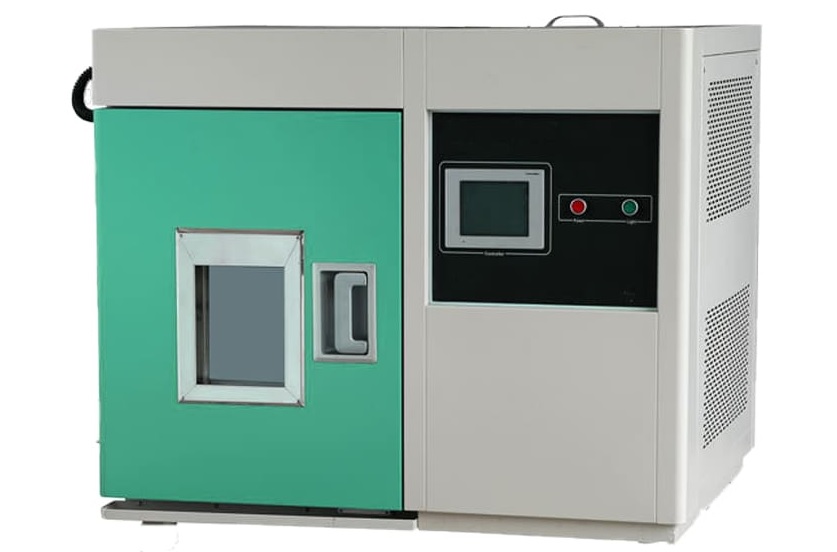Introduction
In today’s rapidly advancing world of technology, research, and manufacturing, precise control over environmental conditions is essential for ensuring product quality, reliability, and longevity. This is where the ecological chamber comes into play. Whether testing the durability of electronics, pharmaceuticals, or industrial materials, an environmental chambers allows companies to simulate extreme conditions—such as temperature, humidity, and pressure—within a controlled environment.
In this blog, we’ll explore an environmental chamber, its key features, why it’s crucial for various industries, and how it contributes to product testing and research. We’ll also dive into the benefits and types of environmental chambers, offering a comprehensive guide on how these chambers support precision testing and development.
What is an Environmental Chamber?
An environmental chamber, also known as a climate chamber or Environmental chamber, is a controlled enclosure used to simulate specific environmental conditions, including temperature, humidity, pressure, and even UV light. These chambers are designed to test the effects of such conditions on various products, materials, or biological items.
Environmental chambers are widely used across many industries, including automotive, electronics, pharmaceuticals, aerospace, and food production, to test the durability and performance of products under real-world or extreme environmental conditions. They play a vital role in ensuring products meet rigorous standards and can withstand the environments in which they are intended to be used.
Key Features of an Environmental Chamber
Environmental chambers have advanced features that allow for accurate and repeatable ecological testing. These include:
1. Precise Temperature Control:
– Simulating temperatures ranging from extreme cold to high heat is crucial for testing the durability of materials and components in various climates. Chambers can often reach temperatures as low as -70°C and as high as 180°C.
2. Humidity Control:
– Many chambers offer precise control over relative humidity, allowing manufacturers to test how products perform in humid or dry conditions, which is essential for products susceptible to corrosion or moisture damage.
3. Multiple Testing Parameters:
– Environmental chambers allow for simultaneously testing various parameters, such as temperature, humidity, pressure, and even vibration, enabling a more comprehensive analysis of product performance.
4. Customizable Test Settings:
– Chambers can be programmed with custom test profiles to simulate different environmental conditions over specific time intervals, making them highly adaptable for different industries.
5. Real-Time Data Monitoring and Logging:
– Built-in sensors and monitoring systems provide real-time data on temperature, humidity, and other environmental factors. Data can be logged and analyzed to ensure compliance with testing standards and improve product performance.
6. Energy Efficiency:
– Modern environmental chambers are designed with energy-efficient systems to reduce power consumption while maintaining precise environmental control.
Benefits of Using Environmental Chambers
Environmental chambers provide numerous advantages for research, product development, and manufacturing businesses. Here are some of the key benefits:
1. Ensures Product Reliability and Durability:
– Environmental chambers enable manufacturers to test the longevity of their products under extreme conditions, ensuring they perform consistently and reliably even in harsh environments.
2. Reduces Product Failures:
– By subjecting products to rigorous environmental testing, companies can identify potential points of failure and improve the design and durability of their products, reducing the risk of costly recalls or product malfunctions.
3. Compliance with Industry Standards:
– Many industries require products to meet strict environmental testing standards. Environmental chambers help ensure products comply with regulatory requirements and quality assurance protocols, such as MIL-STD, ASTM, and IEC standards.
4. Accelerated Life Testing:
– Environmental chambers allow companies to simulate years of wear and tear in days or weeks, helping manufacturers assess product performance over time and make necessary adjustments to improve longevity.
5. Improves Product Development:
– Environmental testing can provide valuable insights into how a product will behave in different conditions, enabling companies to refine their designs and materials before they go to market. This can result in more robust, high-quality products.
6. Reduces Costs:
– By identifying and addressing potential issues early in product development, companies can avoid expensive rework, redesign, or recalls, leading to significant cost savings over time.
Applications of Environmental Chambers
Environmental chambers are widely used in various industries for product testing, quality control, and research. Below are some critical applications:
1. Electronics and Semiconductors:
– Environmental chambers are critical for testing the performance of electronic components under different temperatures and humidity levels. This ensures devices can withstand real-world conditions without malfunctioning or breaking down.
2. Automotive and Aerospace:
– Environmental chambers simulate extreme conditions such as high altitudes, freezing temperatures, or high heat in the automotive and aerospace sectors. Testing vehicles and aircraft components in these conditions ensure safety and durability.
3. Pharmaceuticals and Biotechnology:
– Environmental chambers are essential for testing the stability of drugs, vaccines, and biological samples. They help maintain product integrity by simulating storage conditions such as controlled temperatures and humidity.
4. Food and Beverage Industry:
– In food manufacturing, environmental chambers are used to test the shelf life of products by simulating storage and transportation conditions. This ensures that products remain safe and of high quality throughout their lifecycle.
5. Materials Testing:
– From metals to polymers, environmental chambers assess how materials react to different environmental conditions, helping companies choose the most suitable materials for their products.
Types of Environmental Chambers
There are several types of environmental chambers, each designed for specific testing needs:
1. Temperature Chambers:
– These chambers focus on simulating extreme heat or cold to test how products respond to temperature fluctuations. They are ideal for testing electronics, automotive parts, and temperature-sensitive materials.
2. Humidity Chambers:
– Humidity chambers are designed to replicate various humidity levels and are used to test products that may be exposed to moisture. These are common in electronics, packaging, and material testing.
3. Thermal Shock Chambers:
– Thermal shock chambers rapidly transition between extreme hot and cold temperatures to test the durability of products subjected to sudden temperature changes. These are often used in the aerospace and electronics industries.
4. Altitude Chambers:
– Altitude chambers simulate high-altitude conditions by reducing air pressure within the chamber. These chambers are used to test aerospace components, automotive parts, and products designed for high-altitude environments.
5. Vibration Chambers:
– These chambers combine environmental factors with vibration testing to assess how products respond to real-world conditions like transportation, machinery operation, and mechanical stress.
Why Environmental Chambers are Necessary
Environmental chambers are necessary for any industry focused on quality, safety, and compliance. By providing precise control over environmental factors, these chambers help businesses develop and refine products that meet the highest standards for reliability and performance.
With the ability to simulate a wide range of conditions, from extreme cold to intense heat and humidity, environmental chambers are an indispensable part of research, development, and testing processes. Their role in accelerated life testing, risk mitigation, and product improvement ensures businesses can stay ahead of the competition by offering better products and faster time-to-market.
Conclusion
An environmental chamber is a critical tool in today’s product development and testing landscape, allowing businesses to simulate extreme conditions and evaluate the reliability of their products. These chambers help industries ranging from electronics and aerospace to pharmaceuticals and food ensure that their products meet stringent quality and regulatory standards. By investing in the right environmental chamber, businesses can accelerate product testing, improve reliability, and reduce costs, ultimately leading to better-performing products and higher customer satisfaction.
Environmental chambers are not just helpful but necessary for ensuring product success in any competitive industry.


